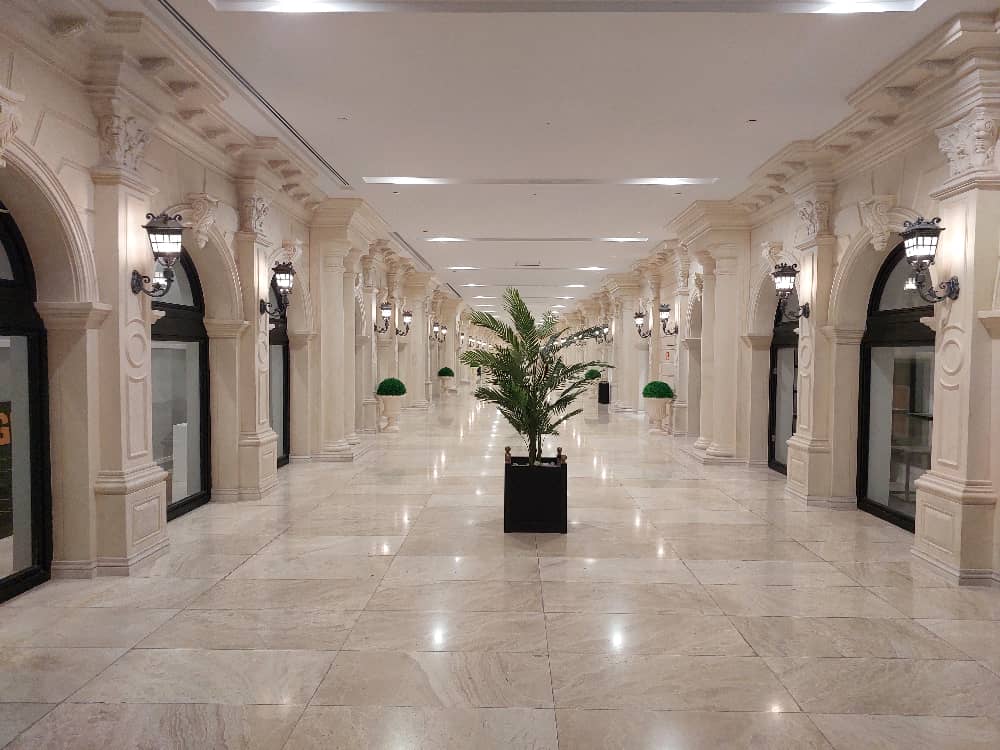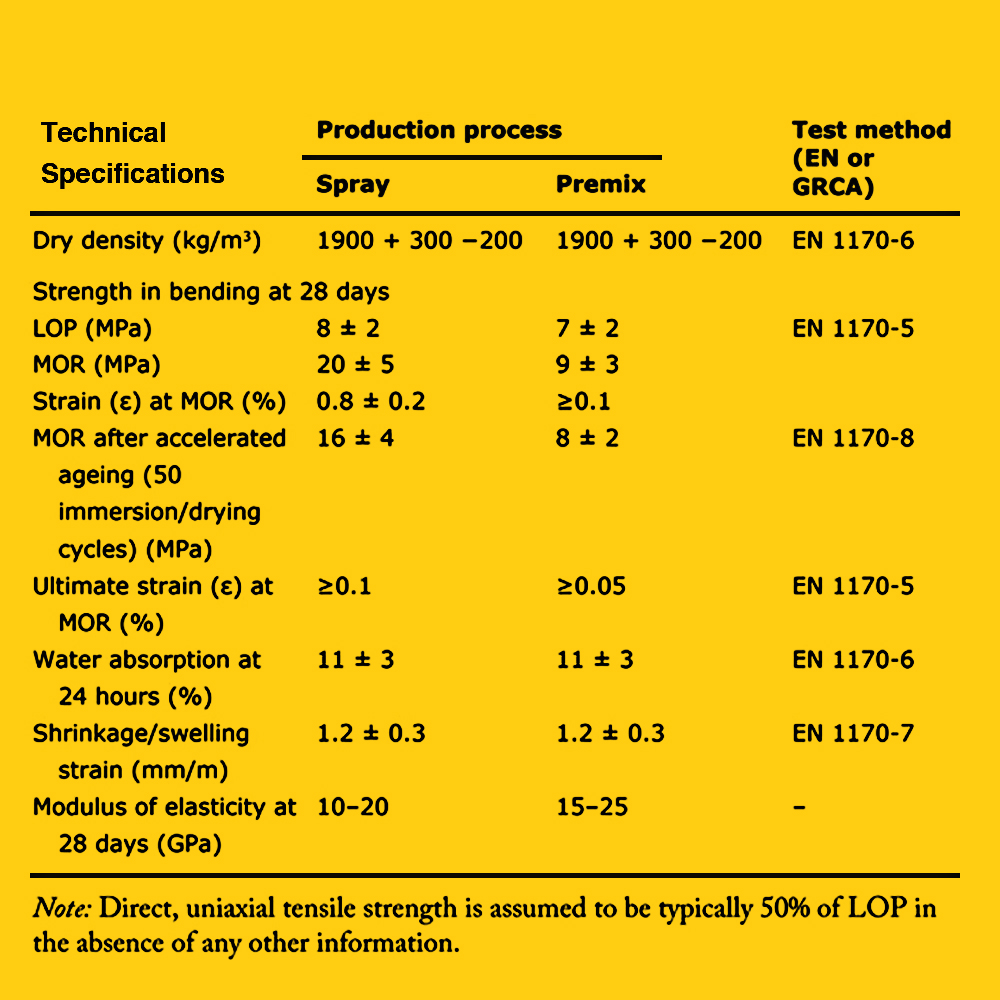
Glass Fiber Reinforced Concrete
This material, abbreviated as GFRC or GRC, is an advanced concrete composite as it is called
Glass fibers are used to strengthen or reinforce concrete, and this combination, in addition to having compressive strength, which is the main nature of concrete, has high tensile and bending strengths.
Characteristics of materials
GFRC
In general, concrete has a much higher resistance than many materials used in the facade in different weather conditions and environmental damage. In this system, due to the presence of fibers, the tensile strength is very high and we will not have the problems caused by surface cracks.
Due to the possibility of producing large parts, the detailedness of the executive system, the installation by dry method and the modulation designed in the construction plans, the possibility of installation at the same time as the progress of the skeleton, with two roofs difference, creates a high speed in the construction of these panels.
Due to the mold production process and making parts specific to each project, it is possible to implement in any type of architecture such as modern,
It is classic and produces curved or curved panels, mesh parts or slim designs and can create different volumes.
Was.

This product has been implemented in different climates all over the world, from the cold of Russia to the heat of the UAE, and after many years, they are still standing without any problems.
Due to the use of special additives and the industrial production of these panels, we can have a highly polished surface or by changing the form of surfaces with different textures such as the porous surface of travertine stones, wood, bricks or antique stones without changing the cost.
These panels do not increase the fire and do not produce toxic gases, and they have high resistance during fire, which is completely compatible with the fire laws.
With regard to global policies to help the health of the environment and encourage the non-use of materials that cause the destruction of our environment, these panels can be among green technologies and be recyclable.
Every piece or form and volume that comes to the mind of the designer and consultant must go through the stage of drawing and transforming the overall idea into smaller components for production. In this process, the best possible path is the cooperation and consensus of the designer and the technical team of the GFRC producer. This opinion regarding the form, thickness and variety of parts will be of great help to both parties.
The next step after designing the part is to design and make a mold to produce the part. The type of mold and the material of the mold will depend on the dimensions, design and volume of the output piece, which generally includes metal, PVC, FRP and silicone molds.
In order to produce mortar, the basic materials and their integration are needed as follows
The next step after designing the part is to design and make a mold to produce the part. The type of mold and the material of the mold will depend on the dimensions, design and volume of the output piece, which generally includes metal, PVC, FRP and silicone molds.
The produced parts generally need a chassis or metal parts to install the part on the facade of the building, this chassis or parts are connected to it after designing the system and how to install the part in the factory and during the production of the part.
ClassAR glass fibers are used in this product, which adds resistance to the fibers in alkaline environment. AR class, a coating of zirconium with an average factor of 16% is added to the fibers. AR glass fibers are used in two ways:
1) Spindle fibers or Roving:
As its name suggests, these fibers are produced longitudinally in spindles of different lengths and weights, which are used in the spray production method.
2) Chopped fibers:
This type of fiber is cut into certain lengths, which is used in the production of slurry or Cast Premix.
The best type of cement to use is A3C or calcium sulfoamine, which creates a less alkaline environment and has higher hardness and high hardening speed, which has the characteristic of reducing the effect of alkalinity and making fibers last longer.
Silica plays the role of concrete mortar filler, which gives the final piece a homogeneous and smoother surface due to the fineness of the mortar. Silica granulation depends on the type of part production method, which is better to use 1.2 mm granulation in the spray production method and 2 mm granulation in the casting method.
In terms of quality, the required water is the quality of water that is used in other branches of concrete. Preferably, the water has low salts and is similar to drinking water in terms of characteristics
Acrylic polymers are another ingredient that varies depending on the production method and application of the piece
This category of materials also includes water reducers, accelerators, retarders, etc.
If the production piece has a color other than the color of the cement used, it can be achieved by adding mineral and natural colors that can be used in concrete.